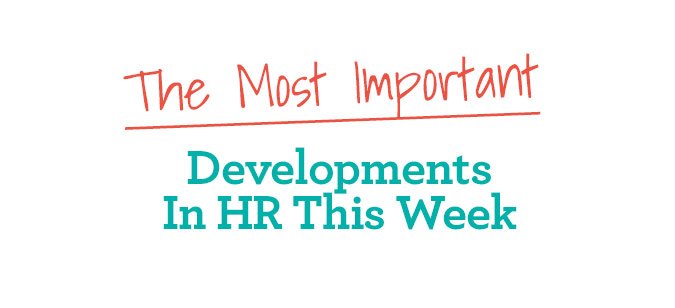
AI’s automation of workplace functions ramps up efficiency, but it can come at a price, and we’re not talking about lost jobs. Yes, AI can and will replace some workers, but it’s the ones who keep their jobs who should take notice. AI can monitor everything from how many keystrokes per hour you make to how quickly you do your job. Take Slack, a virally popular workplace messaging app that is supposed to enable productivity. Except it doesn’t just enable productivity. It measures it. The meaning of its name, unknown to many of its users, is chilling in a 1984 sort of way: Searchable Log of All Conversation and Knowledge. Are the Slack bots really about watching workplace slackers? The Economist


There’s a brand-new podcast on the HR Happy Hour podcast network that’s worth a listen. Premiering last week, it’s called The Human Friendly Workplace. It aims to tell stories about how HR execs are succeeding by making the workplace more human. It’s hosted by author, keynote speaker, and self-described employee engagement fanatic Jason Lauritsen, who says the goal of the series is to inspire HR pros to remember that people are our thing. Given that HR is going to be mud wrestling with AI to keep the humanity in our workplaces, it’s a timely and important topic. Player FM


Jeffrey Pfeffer thinks you can, and are. Pfeffer, a professor of organizational behavior at Stanford, released a new book last week, Dying for a Paycheck: How Modern Management Harms Employee Health and What We Can Do About It, and it’s getting a lot of buzz in the HR world. It outlines how the modern workplace is killing all of us. The toxic psychological environment that permeates many workplaces (long hours, economic woes, the absence of job control) creates chronic stress. The solution: Start treating toxic psychological working conditions as though they were unsafe physical working conditions, because they are. Quartz at Work


Most HR pros are happy with their jobs (80%) but more than half (61%) would consider leaving if the right opportunity came along, according to a new survey by the Salveson Stetson Group. The standout stat of this survey? Only half of CHROs have a qualified successor who could take over if they leave. It would be interesting to find out how many other C-suite execs don’t have a pipeline of qualified people who have been developed and trained to move into those top jobs. Hint: None. HR Dive


When you’re talking about the current skills gap, people usually think of high-tech skill sets like data analytics. But for one company, it’s just the opposite, and they’ve come up with an interesting approach to deal with it. Diamond Brand Gear, which has been making tents and backpacks by hand for 137 years, is facing a low-tech skills gap. They’re having trouble finding people who know how to sew. So they’re hiring people they can train to do the job. How do they choose? They’re using measurements like hand-eye coordination tests or how many pegs a candidate can quickly fit into a board. They’ve taken the skill set, sewing, and identified innate traits and abilities necessary to do that job, and are hiring based on that. Forbes










